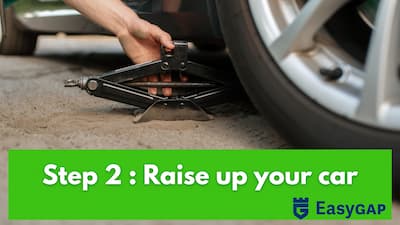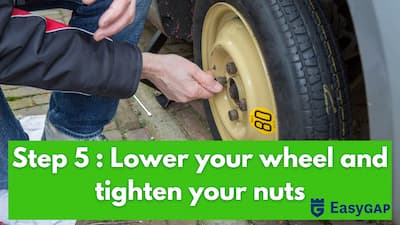Call Monday-Friday 9am - 6pm Closed Saturday & Sunday
A flat tyre can be a considerable inconvenience and change your day, but it doesn't have to change the whole course of  your life. If you know how to change a wheel, then fixing it is as easy as pie! This guide will tell you all about changing wheels on cars, including step-by-step instructions.
your life. If you know how to change a wheel, then fixing it is as easy as pie! This guide will tell you all about changing wheels on cars, including step-by-step instructions.
Step 1: Get the right tools.
The first step when changing the wheel on your car is to get all of the right tools. You'll need a jack and a nut wrench to change your wheel, but it's also sensible to carry spanners and a hammer as well in case there's anything else you need to work on when you change your wheel.
 You should also check the spare wheel you are looking to put on the car. Check it is fully inflated and there are no apparent signs of damage like nails or cuts in the tyre.
You should also check the spare wheel you are looking to put on the car. Check it is fully inflated and there are no apparent signs of damage like nails or cuts in the tyre.
Step 2: Raise your car up.
Find a flat piece of ground with enough space to change your tyre and ensure that you're higher than whatever is underneath your car. Your car needs sufficient clearance for the tyre change, so this requires at least two feet of clearance if possible. If there's not enough room, make sure that you change the tyre on clean, flat ground.
Find the 'jacking' point underneath your car. It will be a small, flat area under the car, but it may have a sticker to indicate. 
Place the jack underneath the jacking point and raise the jack until it makes contact. Check again that the jack is flush with the jack point. If everything is lined up, then continue to jack up the wheel until it is a reasonable clearance from the floor.
Remember you are replacing a wheel with a flat tyre with a spare with a fully inflated tyre. The replacement will need much more clearance to compensate for the fully inflated tyre on the spare.
Step 3: Take off your wheel. 
Firstly you need to loosen the wheel nuts. To do this, use the tool provided in your car. You may also have a locking wheel nut on one of the nuts. Use the locking wheel nut adapter supplied with your vehicle.
If the wheel nuts are difficult to remove, you could try spraying some lubricant, like WD40.
It's crucial that you watch how much pressure is applied and change from side to side when loosening any nuts on a car or else it may snap off and damage other parts of the vehicle. You should also apply little force while changing over so that you don't damage the nut.
Step 4: Put on your spare wheel. 
Line up the holes on the wheel with the holes on the wheel hub. Screw all the nuts into finger tight. Then use the nut wrench to tighten the nuts one by one. When you have finished one, then go the diagonally opposite nut next. Put the locking wheel nut on with the tools provided.
Step 5: Lower the wheel and recheck the nuts.
 Finally, you can lower the car down by lowering the jack. When the jack is clear of the jacking point, you need to check the wheel nuts one final time. Make sure there is no movement after using the nut wrench one last time.
Finally, you can lower the car down by lowering the jack. When the jack is clear of the jacking point, you need to check the wheel nuts one final time. Make sure there is no movement after using the nut wrench one last time.
So there you have it—a simple 5 step guide into how to change a wheel on your car. If you are still unsure, you should practice a couple of times to get used to the process.
And if all else fails, get a professional to do it. Not putting a wheel on safely could be dangerous.


